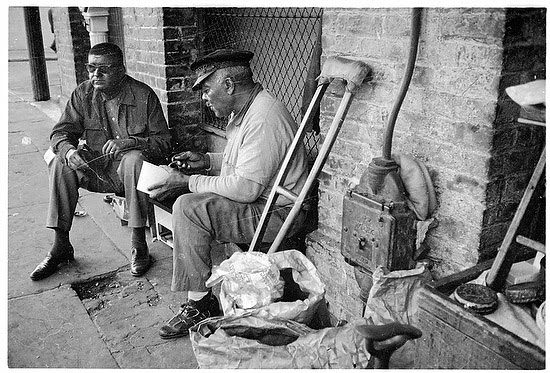 |
| Portia Doubleday and Rami Malek in the pilot episode of “Mr. Robot.” |
I love the depth in the imagery in the cinema-photography.
 |
| by Don Rutledge |
I was talking to my long-time friend Ken Touchton on the phone. We had both talked about the TV show Mr. Robot.
 |
| Watch On-Line Now Here |
We were talking about the photography style of the show, and quite frankly, it is unique. We thought today’s large screen TVs of LCD Sizes 32, 40, 42, 46, 52, 55, 70, and 82 were bringing the cinema into our homes. Instead, the BIG SCREEN has finally arrived so that the director of photography for TV shows is no longer limited.
 |
| John Howard Griffin, the author of Black Like Me, is walking down the street in New Orleans. Photo by Don Rutledge. |
In the last show that Ken Touchton watched, he turned the sound down and just watched and studied, and this was when he realized it was like watching Don Rutledge’s photography once again. In this 1956 photo of John Howard Griffin walking down the street, you can see the similarity of using the negative space.
 |
| by Don Rutledge |
Now, running Don’s work in a newspaper was more difficult than in a magazine. The designer would take a photo like the one above in a magazine and run it across two pages. Sitting in your lap, it has the same effect as a 55″ TV screen would have across the room–Cinematic as we might call it today.
Using negative space like this helped Don create positive and negative moods to help tell a story.
 |
| by Don Rutledge |
Don had a way of finding an incredible scene and then letting the scene unfold with the people moving in and out of the frame. You will see this over and over in Mr. Robot.
 |
| by Don Rutledge |
This photo of a Russian pastor is an excellent example of a composition style used in the Show.
 |
| by Don Rutledge |
When two people are in the photos in Mr. Robot, you see this quite often.
Here is how Don Rutledge has shot some street scenes in the past.
 |
| By Don Rutledge |
Don created tension by playing things off of each other in his compositions.
While the director of photography for Mr. Robot is doing what they think is unique, it has been around a long time, just harder to see in the media when it started in magazines like LIFE magazine back in the 1950s.
While most of today’s video is 50%, the closeup Mr. Robot is pulling upon the style of the great photojournalists like Don Rutledge.






